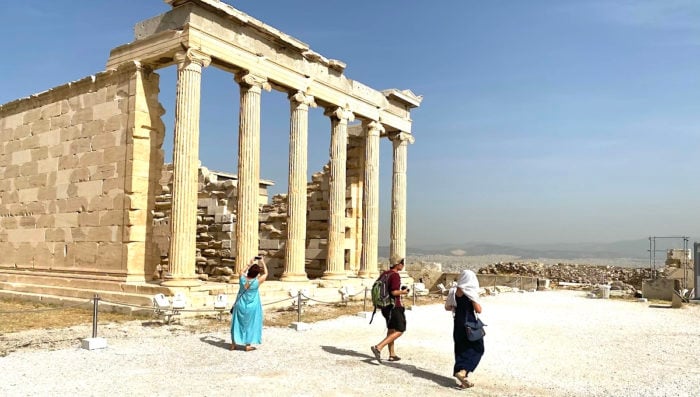
Greece reopened the Acropolis in Athens and other ancient sites nationwide on Monday as the country begins its preparations for the tourist season.
Archaeologists are now also urging the government to reopen all archaeological sites and museums with the necessary health protection measures in place.
The public will be able to visit the historical sites with social distancing measures in place and mandatory use of a face mask.
The move came following the government’s announcement last week that new, less strict measures will be imposed to reduce the lockdown fatigue in the country.
Acropolis becomes entirely accessible to disabled
Works on the Acropolis started last November to improve accessibility to the disabled and those with other mobility and health issues.
Now, a concrete pathway can be used along with the ancient marble path, with well-worn steps, that visitors have used for decades, but which are often slippery and dangerous with dust from the marble.
Although there has been a type of freight elevator used to help those who were completely disabled to be taken to the top, for the first time, thanks to a complete redesign of the approach to the Acropolis, visitors now have a view of the mountain and its monuments that is the same as that seen by the ancient Greeks.
Acropolis Museum has gone entirely digital
The Acropolis Museum launched a new website in late December that brings the museum’s collection to life through digital exhibitions and an extensive virtual catalogue of its ancient artifacts.
The new website includes not just information about the museum’s history, future visits, and upcoming exhibitions, but also a digital archive of the permanent collection, the first of its kind to be provided by a Greek museum.
This voluminous catalogue, free and accessible to all, includes extensive descriptions of the over 2,000 master works housed by the museum as well as an interactive glossary, bibliographies, photographs, drawings, and videos to bring the collection to life.
This digital archive has already proven to be an incredible resource for students, archaeologists, art historians, and all those interested in ancient Greek art.



Comments
Post a Comment